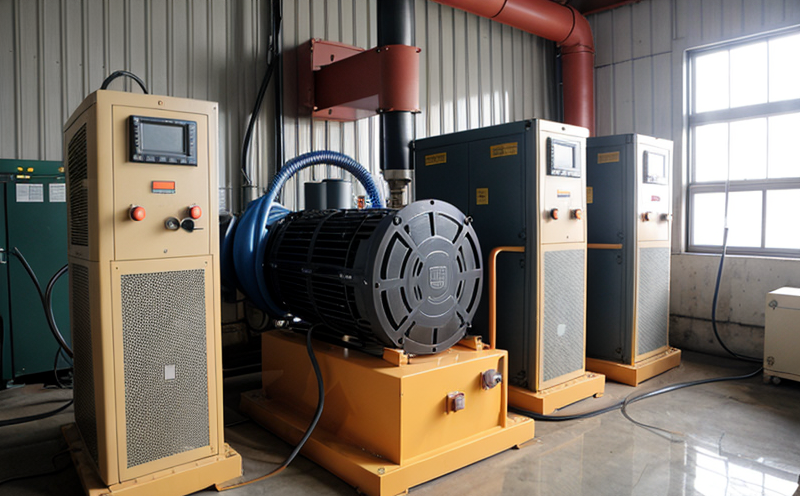ISO 8528 Reciprocating Engine Generator Set Testing
The ISO 8528 standard outlines comprehensive testing protocols for reciprocating engine generator sets. These tests are essential to ensure that the equipment meets stringent performance and safety requirements, particularly in power generation applications. The test aims to verify the reliability, durability, and efficiency of the generator set under various operating conditions.
During ISO 8528 testing, a series of rigorous checks are performed on the engine-generator unit. This includes load tests, which simulate real-world operational conditions to assess power output; thermal analysis to ensure that the equipment does not exceed safe temperature limits; and vibration monitoring to check for any mechanical stresses that could lead to premature failure.
The testing process begins with a thorough inspection of all components. This ensures that no defects are present before initiating the tests. Following this, the generator set is subjected to a variety of performance checks, including but not limited to, load changes, speed variations, and fuel efficiency trials. These tests help in evaluating the generator's ability to maintain stable power output under different conditions.
The results of these tests are meticulously recorded and analyzed by our team of experienced engineers. Compliance with ISO 8528 standards is crucial for ensuring that the equipment meets international quality benchmarks, which enhances its marketability and operational safety.
| Test Parameter | Description |
|---|---|
| Load Testing | Evaluates the generator's ability to maintain stable power output under varying load conditions. |
| Thermal Analysis | Determines if the equipment can operate within safe temperature limits without overheating. |
| Vibration Monitoring | Checks for mechanical stresses and potential points of failure due to excessive vibration. |
Applied Standards
The ISO 8528 standard is widely recognized and applied in the power generation industry. It ensures that reciprocating engine generator sets are rigorously tested to meet international quality benchmarks. Compliance with this standard guarantees that the equipment operates reliably, efficiently, and safely.
| Standard | Description |
|---|---|
| ISO 8528-1 | Part 1: General Requirements and Test Procedures. |
| ISO 8528-2 | Part 2: Additional Requirements for Industrial Generator Sets. |
Why Choose This Test
Selecting ISO 8528 testing is a strategic decision that provides numerous benefits. Firstly, it ensures compliance with international standards, which is crucial for exporting equipment to global markets. Secondly, the thoroughness of these tests helps in identifying potential issues early on, minimizing operational risks and downtime. Additionally, successful completion of these tests enhances the reputation and trustworthiness of your brand.
- Compliance with international standards
- Identification of potential issues early
- Enhanced operational safety
- Increase in marketability
- Establishment of trust and reliability
Environmental and Sustainability Contributions
The ISO 8528 testing process plays a vital role in promoting sustainability within the power generation sector. By ensuring that generator sets operate efficiently, these tests help reduce fuel consumption and emissions, thereby contributing to environmental conservation efforts.
- Reduction of operational costs
- Minimization of greenhouse gas emissions
- Enhanced reliability leading to less frequent maintenance and repairs





